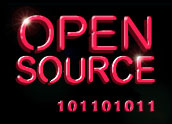Enterprise IT is a very serious matter, but you might not know it judging by the software tools that are often integral to enterprise application development and IT operations.
The list of odd names in today’s data centers and enterprise IT shops also highlights the ongoing trend of polyglot programming. Today’s applications and services are based on a wider variety of application components — languages, frameworks, databases, Web and application servers — and run on a wider array of infrastructure that includes bare metal servers, traditional data centers, virtual environments, and public, private, or hybrid clouds.
Despite the odd, interesting, and sometimes apt names of the seven software projects highlighted here, these are some serious tools. Our list of technologies is not exhaustive of funny names by any means, and it is not centered on any specific area of technology.
What they have in common is that all of these tools are representative of the polyglot programming trend, as well as the adjacent trend of more agile IT operations, continuous delivery, and the confluence of developers and IT operations, aka “devops.”
The Magnificent 7
1. Chaos Monkey
Chaos Monkey is infrastructure testing and failure software and service that runs on Amazon Web Services or other clouds. It identifies groups of systems and randomly terminates single systems within groups.
The idea is to test for failure and prepare for resiliency, and, true to its name, Chaos Monkey centers on withstanding IT failures and outages and keeping applications and services running.
Developed by Netflix, Chaos Monkey is open source under the Apache License 2.0 and is part of Netflix’s Simian Army software. Also in the army are Janitor Monkey, which looks for unused cloud resources to clean up, and Conformity Monkey, which combs the cloud for instances that are not in conformance with predefined rules and processes.
These tools may not necessarily be considered enterprise IT, but the lines between organizations such as Netflix and mainstream enterprises and mid-market companies is rapidly blurring.
2. Chef
Chef is a configuration and provisioning tool that has evolved into a broader continuous deployment software. Among the more mature open-source tools in its space, Chef is also the basis of enhanced commercial software from Chef, the vendor, which liked the name so much that it changed from “Opscode” in early 2014.
Written mostly in Ruby and Erlang, Chef is open-source under the Apache License. In addition to its main backer, Chef, it is the basis of automation software and services from Amazon, IBM, and Rackspace, among others.
3. Cobbler
Cobbler is a Linux install and update server that speeds and tasks by reducing commands and scripting.
The software tends to be used with other cloud computing and automation software — and while leadership may not be aware, is fairly prevalent in the enterprise.
Written in Python, Cobbler is open source under the GNU GPL.
4. Mustache
Mustache is a templating system that can be used for HTML, configuration, and other files.
The software, open source under the MIT License, is used by automation and continuous deployment vendor CFEngine for its file templating engine that makes configuration file editing more scalable.
It gets its name from its use of {curly brackets} that resemble mustaches.
5. Pinkerton
Pinkerton is a tool born out of the Flynn open-source PaaS for Docker. Pinkerton allows users to view and use container images across different container infrastructures.
As the Docker and containerization ecosystems quickly take shape, any tools connected to them, including Pinkerton, are likely to emerge as significant software.
6. Puppet
Puppet is another configuration and provisioning automation tool that has evolved into automation of storage, networking, and continuous delivery.
Backed commercially by Puppet Labs, the software is open source under the Apache License.
Puppet Labs liked the name so much that it switched from “Reductive Labs” to include the “Puppet” moniker in 2010.
Puppet has grown from mainly Linux and technical circles to become a widespread enterprise tool that now also supports Windows.
7. Vagrant
Vagrant is a tool for building and managing virtual development environments. Open source under the MIT License, Vagrant is typically used to wrap around other automation tools, such as Chef and Puppet.
The software also highlights the growing influence and power of enterprise developers, who are more often allowed to use the tools they want in today’s fast-moving market.
So don’t get the wrong idea when IT operators or CIOs discuss a Vagrant in their data center—it’s OK; the team needs it.
Enterprises Coming Around
So, what do these odd names mean for mainstream enterprises and service providers and their IT staffs?
The proper response to polyglot programming often means empowering users with new tools and technologies while maintaining control, order, security, and compliance. This is often a situation of Shadow IT efforts that bypass enterprise IT departments — or what I call “Shadow-y” IT efforts that pressure IT departments for resources, tools, and approval but fall short of fully sanctioned use.
In response, enterprise organizations are increasingly less likely to discipline or fire the people behind these efforts and increasingly likely to task them with proving benefits and gains and then normalizing and sanctioning the technology, process, or use.



















































